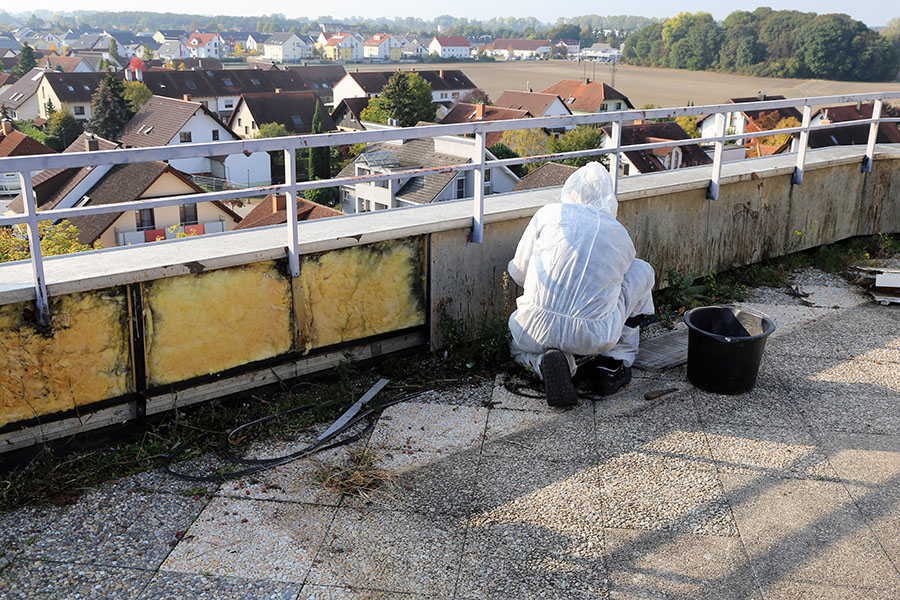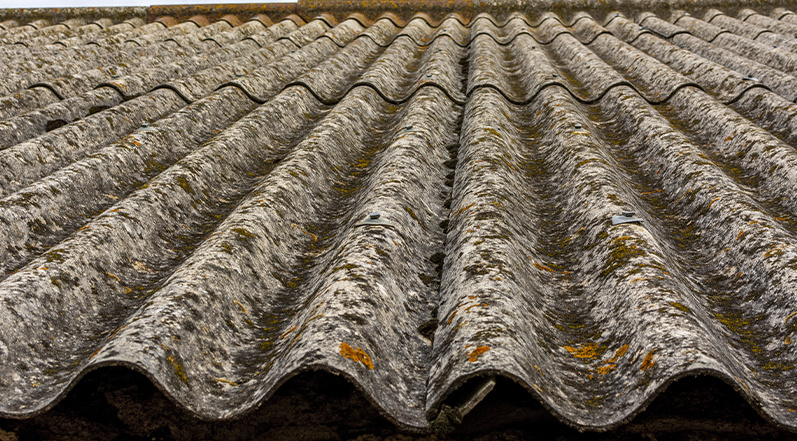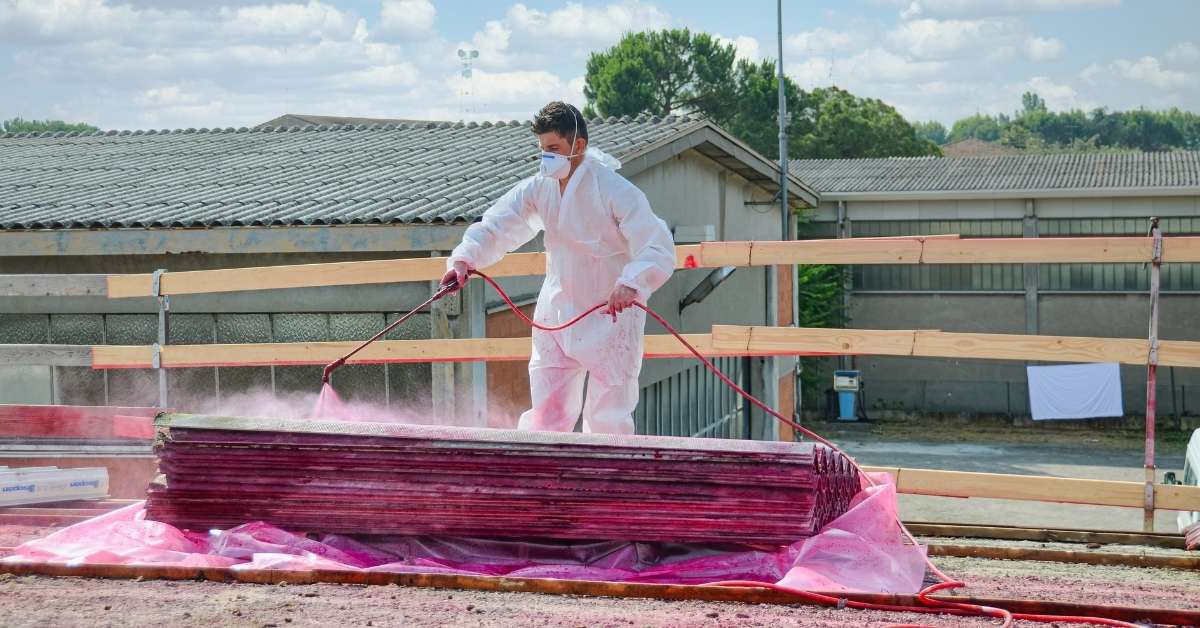Public Health Implications Of Asbestos Exposure Cost Guide For Asbestos Removal
Public Health Implications Of Asbestos Exposure Cost Guide For Asbestos Removal
Blog Article
Choosing The Right Method For Asbestos Roof Removal What To Do If You Find Asbestos
Asbestos risk assessment is a crucial process for guaranteeing the protection and health of individuals exposed to this hazardous material. Asbestos, once commonly used in development and insulation products, poses severe health risks, including lung most cancers, mesothelioma, and asbestosis. Given its widespread historic use, understanding asbestos risk assessment is important for owners, property managers, and building professionals.
The preliminary section of asbestos risk assessment usually entails identifying potential asbestos-containing materials (ACMs) in a building. This includes a radical inspection, typically carried out by certified professionals educated in recognizing and sampling materials which will contain asbestos. Inspectors give attention to areas such as insulation, floor tiles, textured paints, and roofing materials, which are historically known for asbestos use.
Preventing Asbestos Contamination During Roof Work Removal Of Asbestos Roof In Area

Once potential ACMs are identified, samples are collected for laboratory analysis. This step is essential since not all materials that look just like asbestos are actually harmful. The evaluation is carried out to determine the presence and focus of asbestos fibers. These laboratory outcomes guide subsequent actions relating to management and abatement.
Risk assessment also consists of evaluating the condition of any recognized asbestos materials. Damaged or deteriorating ACMs are extra hazardous because of the increased likelihood of fiber launch into the air. Professionals examine the extent of damage and the potential for exposure primarily based on the material’s location and situation. This assessment informs the risk stage posed to occupants and employees in proximity to the identified materials.
An integral a part of the assessment is contemplating the situation of the ACMs. Materials in high-traffic areas could present greater risk due to the potential for disturbance. Likewise, materials used in ventilated areas might launch more fibers if disturbed, increasing the danger of inhalation. The evaluation additionally includes assessing who may be exposed and under what circumstances they could come into contact with harmful asbestos fibers.
Asbestos Roof Removal For Home Renovations How To Get Your Roof Replaced For Under 1000
Determining the timeframe of exposure is another key facet of asbestos risk assessment. Short-term exposure might carry lower risks in comparability with long-term or repeated exposure. Although even temporary encounters with excessive levels of asbestos could be dangerous, understanding these nuances helps in accurately assessing the danger to people over time.
Recommendations are then shaped primarily based on the findings of the risk assessment. If the assessment identifies vital hazards, options could include monitoring, encapsulation, or removal of the ACMs. Each option presents its own set of concerns, including cost, disruption, and long-term safety.
Regular monitoring and periodic assessments could be essential in some circumstances. This is because situations in a building can change over time, potentially affecting the security of ACMs. These ongoing evaluations make sure that any new risks are identified promptly, allowing for quick corrective measures if essential.
Documentation performs a significant position in asbestos risk assessment. All findings, recommendations, and actions taken have to be meticulously recorded for legal and compliance causes. Record-keeping provides a transparent historical past of the risk assessment process, which is essential for informing future assessments and making certain safety regulations are adopted.
Asbestos Regulations Affecting Roof Removal Costs Associated With Removal And Replacement
Compliance with local and federal regulations is another critical consideration in the assessment process. Different jurisdictions might have specific laws governing asbestos handling and risk assessment. Stakeholders have to be conversant in and cling to those regulations to make sure the safety of public health and avoid potential legal penalties.
Public schooling about asbestos risks is significant as properly. Many people remain unaware of the risks associated with asbestos exposure and the importance of proper assessments. Community awareness can inspire motion, encouraging property homeowners to conduct assessments and take essential precautions, thereby lowering the general risk of exposure.
In conclusion, asbestos risk assessment is an essential practice for identifying and mitigating the dangers posed by asbestos in various environments. The process encompasses thorough inspections, laboratory analysis, condition evaluations, and compliance with regulations. Through effective risk assessment, it is possible to safeguard public health, making it imperative for homeowners and professionals alike to prioritize these evaluations in properties potentially containing asbestos.
Importance Of Professional Asbestos Removal Cost To Remove Asbestos Garage
- Identification of asbestos-containing materials (ACMs) in buildings by way of thorough inspections and sampling techniques.
- Evaluation of the situation and extent of injury to ACMs, contributing to understanding the urgency of risk management.
- Assessment of exposure risks for numerous occupation groups working in or near asbestos websites, together with maintenance and development personnel.
- Implementation of legal and regulatory requirements, ensuring adherence to local and nationwide safety requirements relating to asbestos handling.
- Development of a tailor-made asbestos management plan, outlining steps for monitoring, maintenance, and potential removal of ACMs.
- Training and teaching programs for workers on asbestos hazards and safe work practices to attenuate exposure.
- Regular re-evaluations of asbestos conditions to account for adjustments within the building environment or occupancy levels.
- Use of risk communication strategies to tell stakeholders about asbestos presence, risks, and management activities.
- Collaboration with health professionals to monitor any health effects on staff probably exposed to asbestos fibers.
- Establishment of emergency response plans for asbestos-related incidents to go now successfully manage exposure risks and ensure great post to read safety.
What is asbestos risk assessment?
Asbestos risk assessment is the process of evaluating the potential hazards posed by asbestos materials in a building. This assessment helps identify the presence of asbestos, consider its condition, and determine the extent of risk to occupants and staff, guiding necessary actions for management or removal.
Why is an asbestos risk assessment necessary?
Legal Requirements For Asbestos Removal In Nsw Removal Of Asbestos Roof In Area
An asbestos risk assessment is important to protect the health and safety of people who could additionally be exposed to asbestos fibers - Asbestos Awareness Campaigns In Sydney. It helps identify areas the place asbestos is current, assess the risk of exposure, and implement acceptable control measures to mitigate these risks, making certain compliance with legal regulations
How often ought to an asbestos risk assessment be conducted?

It is beneficial to conduct an asbestos risk assessment each three years or every time important modifications happen in the building environment, corresponding to renovations or changes in occupancy. Regular reassessment ensures that any adjustments in asbestos condition or risk exposure are promptly recognized and addressed.
Who ought to conduct the asbestos risk assessment? (Asbestos Awareness Campaigns In Sydney)
Asbestos Management Plans For Roofs Residential Asbestos Removal Services
The assessment ought to be carried out by a qualified and licensed asbestos professional with expertise in identifying and managing asbestos-containing materials. This ensures that the assessment is thorough, correct, and compliant with local regulations and safety guidelines.

What happens if asbestos is discovered through the risk assessment?
If asbestos is discovered, the qualified professional will advise on one of the best plan of action, which may embrace leaving it undisturbed whether it is in good condition, encapsulating it, or safely eradicating it. Ongoing monitoring and management plans will typically be established to ensure safety.
Can I carry out an asbestos risk assessment myself? - Choosing The Right Method For Asbestos Roof Removal
Using Technology In Asbestos Roof Removal Diy Awareness For Asbestos Removal
While some preliminary assessments may be made by individuals who're knowledgeable about asbestos, it is strongly really helpful to hire a certified professional for a comprehensive risk assessment. Professionals have the proper training and instruments to accurately identify and evaluate asbestos risks.
What are the potential health risks of asbestos exposure?
Asbestos exposure can lead to severe health issues, including asbestosis, lung most cancers, and mesothelioma. These situations often develop after extended exposure, making it essential to assess and manage asbestos risks diligently to protect public health.
Training Programs For Asbestos Removal Professionals Removal & Replacement Of Roof Asbestos
Are there regulations relating to asbestos risk assessments?
Yes, many international locations have specific regulations governing asbestos management, including the requirement for regular risk assessments in business buildings and sure residential constructions. Compliance with these regulations is mandatory to ensure safety and avoid legal repercussions.
What ought to I do if I suspect asbestos in my home?
Preventing Asbestos Contamination During Roof Work Residential Asbestos Removal Services
If you suspect the presence of asbestos in your home, do not disturb the material. Contact a licensed asbestos professional to conduct a risk assessment and determine the best course of action to manage or remove the asbestos safely.
Report this page